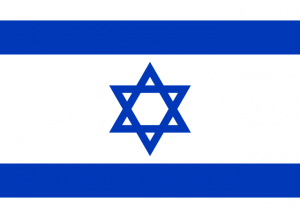Difference between revisions of "Language/Hebrew/Vocabulary/Time-and-Calendar"
m (Quick edit) |
m (Quick edit) |
||
| Line 1: | Line 1: | ||
<span pgnav> | |||
{| class="wikitable pg_template_nav" | |||
|[[Language/Hebrew/Vocabulary/Weather|◀️ Weather — Previous Lesson]] | |||
|[[Language/Hebrew/Grammar/Nouns|Next Lesson — Nouns ▶️]] | |||
|} | |||
</span> | |||
{{Hebrew-Page-Top}} | {{Hebrew-Page-Top}} | ||
| Line 141: | Line 148: | ||
{{Hebrew-Page-Bottom}} | {{Hebrew-Page-Bottom}} | ||
<span links></span> | <span links></span> | ||
<span pgnav> | |||
{| class="wikitable pg_template_nav" | |||
|[[Language/Hebrew/Vocabulary/Weather|◀️ Weather — Previous Lesson]] | |||
|[[Language/Hebrew/Grammar/Nouns|Next Lesson — Nouns ▶️]] | |||
|} | |||
</span> | |||
Revision as of 18:12, 29 March 2023
| ◀️ Weather — Previous Lesson | Next Lesson — Nouns ▶️ |
In this lesson, we will learn the Hebrew words for time and calendar. Knowing these words will help you schedule appointments and make plans with Hebrew-speaking friends, as well as help you understand Hebrew news and media. We will cover the days of the week, months of the year, and how to tell time.
With the completion of this lesson, consider investigating these related pages: Time & Count to 10.
Days of the Week
In Hebrew, the days of the week are based on the seven-day Creation story described in the Book of Genesis. The Hebrew names for the days of the week are:
| Hebrew | Pronunciation | English |
|---|---|---|
| יום ראשון | Yom Rishon | Sunday |
| יום שני | Yom Sheni | Monday |
| יום שלישי | Yom Shlishi | Tuesday |
| יום רביעי | Yom Revi'i | Wednesday |
| יום חמישי | Yom Chamishi | Thursday |
| יום שישי | Yom Shishi | Friday |
| שבת | Shabbat | Saturday (Sabbath) |
Note that the Hebrew calendar day starts at sunset, so Shabbat (Saturday) actually begins on Friday evening.
Months of the Year
The Hebrew calendar is a lunar calendar, based on the cycles of the moon. The months of the Hebrew year are:
| Hebrew | Pronunciation | English |
|---|---|---|
| תשרי | Tishrei | September-October |
| חשון | Cheshvan | October-November |
| כסלו | Kislev | November-December |
| טבת | Tevet | December-January |
| שבט | Shevat | January-February |
| אדר | Adar | February-March (or Adar I and Adar II in leap years) |
| ניסן | Nisan | March-April |
| אייר | Iyar | April-May |
| סיוון | Sivan | May-June |
| תמוז | Tamuz | June-July |
| אב | Av | July-August |
| אלול | Elul | August-September |
The Hebrew calendar has 12 months, with a 13th month added every 2-3 years to keep the calendar in sync with the solar year. This is called a leap year, and the extra month is called Adar II.
Telling Time
To tell time in Hebrew, you will need to know the Hebrew numbers from 1-12. Here are the numbers from 1-12 in Hebrew:
| Hebrew | Pronunciation | English |
|---|---|---|
| אחד | Echad | One |
| שניים | Shtayim | Two |
| שלושה | Shaloshah | Three |
| ארבעה | Arba'ah | Four |
| חמישה | Chamishah | Five |
| שישה | Shishah | Six |
| שבעה | Shevah | Seven |
| שמונה | Shmonah | Eight |
| תשעה | Tish'ah | Nine |
| עשרה | Esreh | Ten |
| אחד עשר | Echad-Esreh | Eleven |
| שנים עשר | Shtey-Esreh | Twelve |
To tell the time, we add the word "שעה" (sha'ah) after the hour, which means "hour". For example, "one o'clock" is "חדש בשעה אחת" (echad ba'sha'ah achat), literally "one at the hour one."
To indicate the minutes, we add the number of minutes after the hour, followed by the word "דקה" (dak'ah) which means "minute." For example, "two fifteen" is "שתיים וחמש עשרה" (shtayim ve'chamish esreh), literally "two and fifteen."
If the time is after half past the hour, we add the word "חצי" (chatzi), which means "half." For example, "four forty-five" is "חמש עשרה לחמש" (chamish esreh la'chamish), literally "fifteen to five."
Practice
Now that you've learned the Hebrew words for time and calendar, it's time to practice! Try asking a Hebrew-speaking friend what time it is, or practice scheduling an appointment or meeting using the Hebrew calendar. The more you practice, the more natural these words and phrases will become.
Sources
Other Lessons
| ◀️ Weather — Previous Lesson | Next Lesson — Nouns ▶️ |
